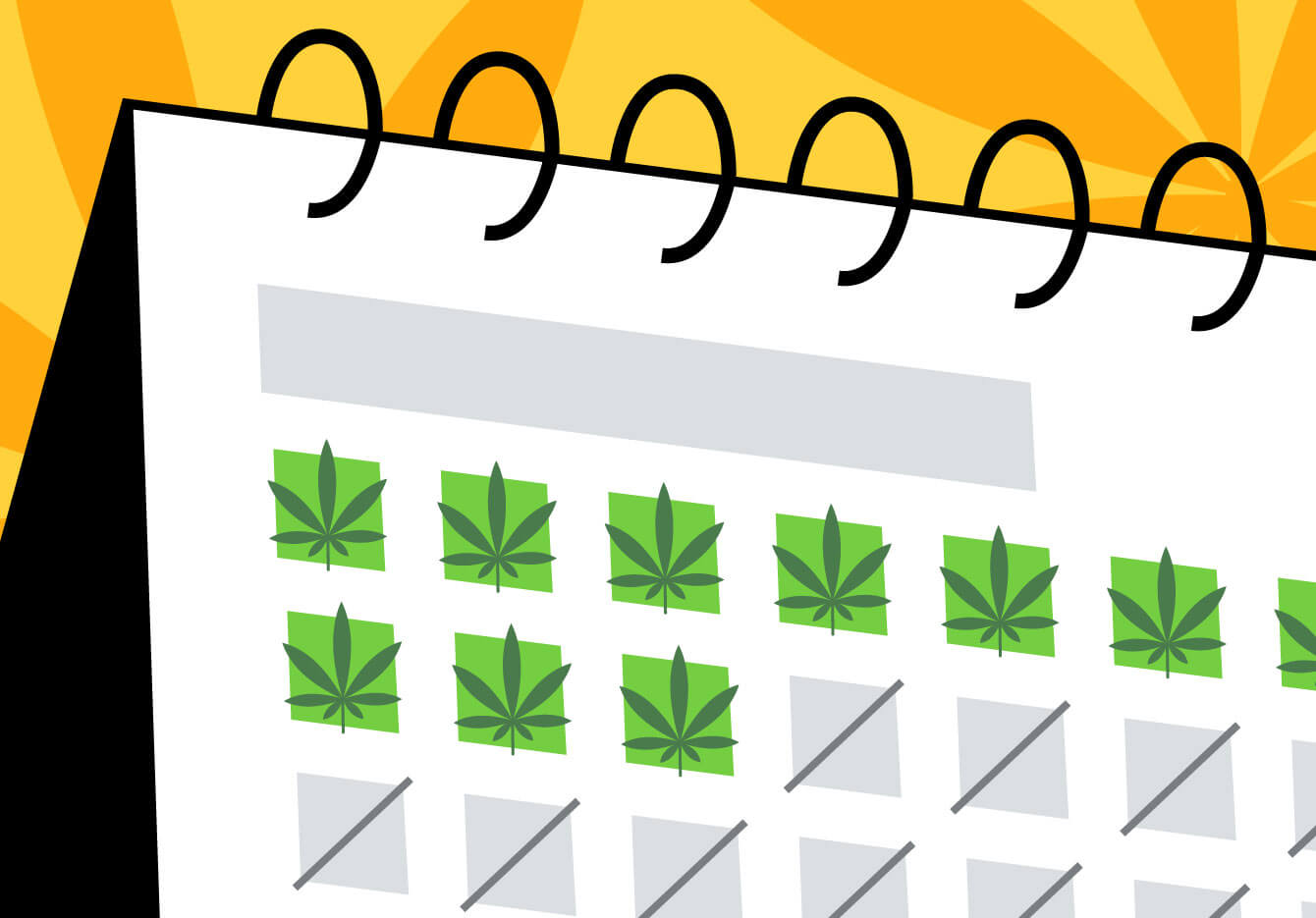Cannabis Tolerance Breaks: A Journey to Rediscover Sensitivity
Delving into the realm of cannabis involves understanding the intricacies of tolerance breaks, affectionately known as T-breaks. Are they a mere wellness experiment or a reset button for your cannabis routine? Let’s unravel the mystery and explore the potential benefits of hitting pause.

What Exactly is a Tolerance Break?
Whether you view it as a wellness experiment or a way to recalibrate, a tolerance break (T-break) can resensitise your body’s response to cannabis. Despite sounding daunting, T-breaks are entirely self-determined. You have the autonomy to decide the duration and extent of your reduction, without the need to bid farewell to cannabis forever. It’s a flexible approach, allowing you to address unwanted symptoms like fatigue, forgetfulness, or anxiety.
Picture a T-break as a temporary hiatus. The aim is to restore your sensitivity to cannabinoid receptors. If you find yourself relying on cannabis more than desired or wish to alleviate specific symptoms, a well-structured T-break might be just the thing.
However, there are caveats to consider. frequent consumers experience far fewer cognitive effects from cannabis than infrequent consumers. While a T-break can be beneficial, it might lead to a reduction in your ability to process ideas and coordinate once you resume cannabis consumption, especially if you engage in certain activities after a T-break.
Read on to discover the hows, whys, and what-ifs of T-breaks.
Understanding Tolerance: A Brief Overview
In medical terms, tolerance refers to a diminished response to any substance, whether THC, prescription drugs, or even caffeine. Regular cannabis consumption can lead to tolerance, where increasing amounts are needed to achieve the same effects. This not only desensitises receptors but can impact the entire endocannabinoid system, governing sleep, body temperature, hunger, and memory.
The Development of THC Tolerance: A Sneak Peek
Frequent cannabis use often results in THC tolerance. This phenomenon is linked to CB1 receptors, densely concentrated in the brain. As individuals build tolerance, CB1 receptors become desensitised, leading to down-regulation. This process diminishes receptor efficiency and reduces active CB1 receptors. The consequence? More cannabis is required to attain the same effects, creating a cyclical pattern of increased consumption and further desensitisation.
Decoding T-breaks: A Breakdown
A Tolerance break, or T-break, is a deliberate pause in your cannabis routine, designed to restore cannabinoid receptor sensitivity. In essence, it’s a reset for your cannabis tolerance. The length of a T-break is entirely up to you and may or may not involve complete abstinence from cannabis. It’s a customisable approach tailored to your goals.
Do T-breaks Work? The Emerging Evidence
Though research is ongoing, recent studies suggest T-breaks effectively restore cannabinoid receptors to their normal state. Human trials indicate CB1 receptors reset after four weeks of abstinence. Another trial echoes these findings, implying that most cognitive difficulties associated with long-term cannabis use tend to dissipate after several days to a month of abstaining.
When and Why Consider a T-break?
Frequent cannabis consumption heightens the risk of cannabis use disorder. Tolerance breaks offer a chance to reset consumption patterns and mitigate risks, especially if concerns arise about disruptions to daily life. One in 11 cannabis consumers develops a cannabis use disorder, with daily consumption elevating this risk to 25-50%. If you’re questioning your usage, resources are available.
What to Expect During a T-break
Embarking on a T-break may necessitate an adjustment period. Temporary changes to sleep, appetite, and feelings of anxiety or irritability might occur. The key is to stay occupied, particularly during your typical cannabis-consuming hours.
Withdrawal symptoms from cannabis are generally mild, with increased hostility being a notable exception in some cases. Every individual is unique, and if abrupt cessation feels uncomfortable, a gradual reduction may be a smoother transition into a complete T-break.
Crafting Your T-break Schedule: A Blueprint
Planning your T-break involves deciding when to commence, how long it will last, and whether cannabis will be entirely excluded or gradually reduced. Opt for a time when your schedule is less demanding, ensuring minimal disruptions. Be prepared for withdrawal symptoms, and resources like the University of Vermont’s T-Break Guide can provide structure and support. Removing cannabis products and accessories, involving friends or family, and planning engaging activities are additional strategies for a successful T-break.

